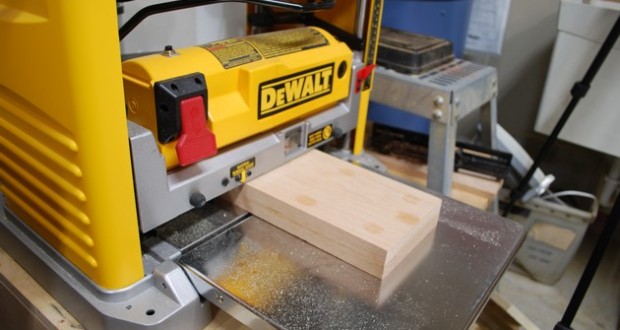How to Use the Wood Planer? Safety TipsA Story by Deborah K. McIntyreA wood planer is The essential matching. The wood furniture looking is very beautiful.The thickness planer is one of the most secure woodworking machines you will work with. A cutter head turns in the middle while infeed and outfeed rollers pull the board through. You don't have to clutch the board once the infeed roller has grabbed hold of it. There are only a couple of safety issues with this machine. When you feed a board in, feed it in smoothly, delicately, and as the level of the machine's bed as could be expected under the circumstances. Put some descending weight on the board specifically on the infeed side of the bed as you feed it in.
Similarly, as with the jointer, kickback situations are uncommon with this machine. It is only prone to happen with free bunches, nails or other remote items. Check the board with an attractive wand if it is something questionable like animal dwelling place board. Free bunches can be evacuated or stuck in before planning to maintain a strategic distance from shots. A five-minute epoxy paste won't hold up your production time. PRECISION TIP: One utilization of a thickness planer is to plane like parts to a similar last thickness. In any case, regardless of how carefully you introduce your planer knives into the cutter head, it is ensured that they won't be set to precisely the same at the two closures. So if you plane one load up at the outrageous left half of the quaint little inn at the extraordinary right, they aren't probably going to be the very same thickness. Consequently, you should feed like boards through a similar piece of the machine for the last pass. It doesn't make a difference if you pick the left side, right side or center, yet simply stick to one location. The typical system is to simply haphazardly select any piece of the cutter head while doing your initial passes or unpleasant planing. This is critical too, as you need to wear all parts of the knives equally. Be that as it may, when you are prepared for the last pass, which will build up your last thickness, run the majority of your boards through, one at any given moment, in a similar territory of the cutter head. If your planer has a hostile to kill bolt instrument, secure it just before this last pass. QUALITY TIP: One of your foes while planing or jointing is removed. I touched on the issue of deciding the correct feed direction in my keep going article on jointing. Tragically, the grain in a solitary load up regularly alters course somewhere along its length, sometimes more than once. While you can hand plane in two directions, planers and jointers can't. So you will find that sometimes you need to pick the lesser of two wrongs and still have some detach somewhere on the load up. Jointers, for the most part, complete a superior occupation of planing in the wrong direction than a thickness planer for the sole reason that you control the feed speed of a jointer. You can push a load up gradually to decrease remove. However, even the slowest speed on a two-speed planer can be too quick. There are two techniques I utilize when detach is unavoidable. Right off the bat, the keener the knives, the better the quality of cut, even contrary to what would be expected. So recently honed knives are a smart thought on difficult woods. Fast, you can feed a load up through your planer on a skewed edge, as opposed to pointing straight ahead. Don't point it too far, or the back end will get on the edge of the machine as opposed to remaining on the bed. In any case, skewing the board diminishes the cutting point of the knives and gives you a cleaner "shearing" cut. This method is regularly utilized when hand planing also. Secondly, and only if all else fails, you can wipe the surface of the load up with a wet cloth just before feeding it into your planer. This mellows the wood filaments sufficiently only to stay away from most remove. This isn't something I need to do unless I have no other decision, as I don't have any desire to wet my planer. Be that as it may, I will do it if all else fails on the last go of an extremely resolved board. Don't trouble on the harsh passes only on the last pass. I will typically point the load up and also wet it, to give myself two possibilities at staying away from removing in the meantime. © 2018 Deborah K. McIntyreAuthor's Note
Reviews
|
Stats
125 Views
1 Review Added on April 16, 2018 Last Updated on April 16, 2018 Tags: thickness planer, surface planer Author
|


 Flag Writing
Flag Writing